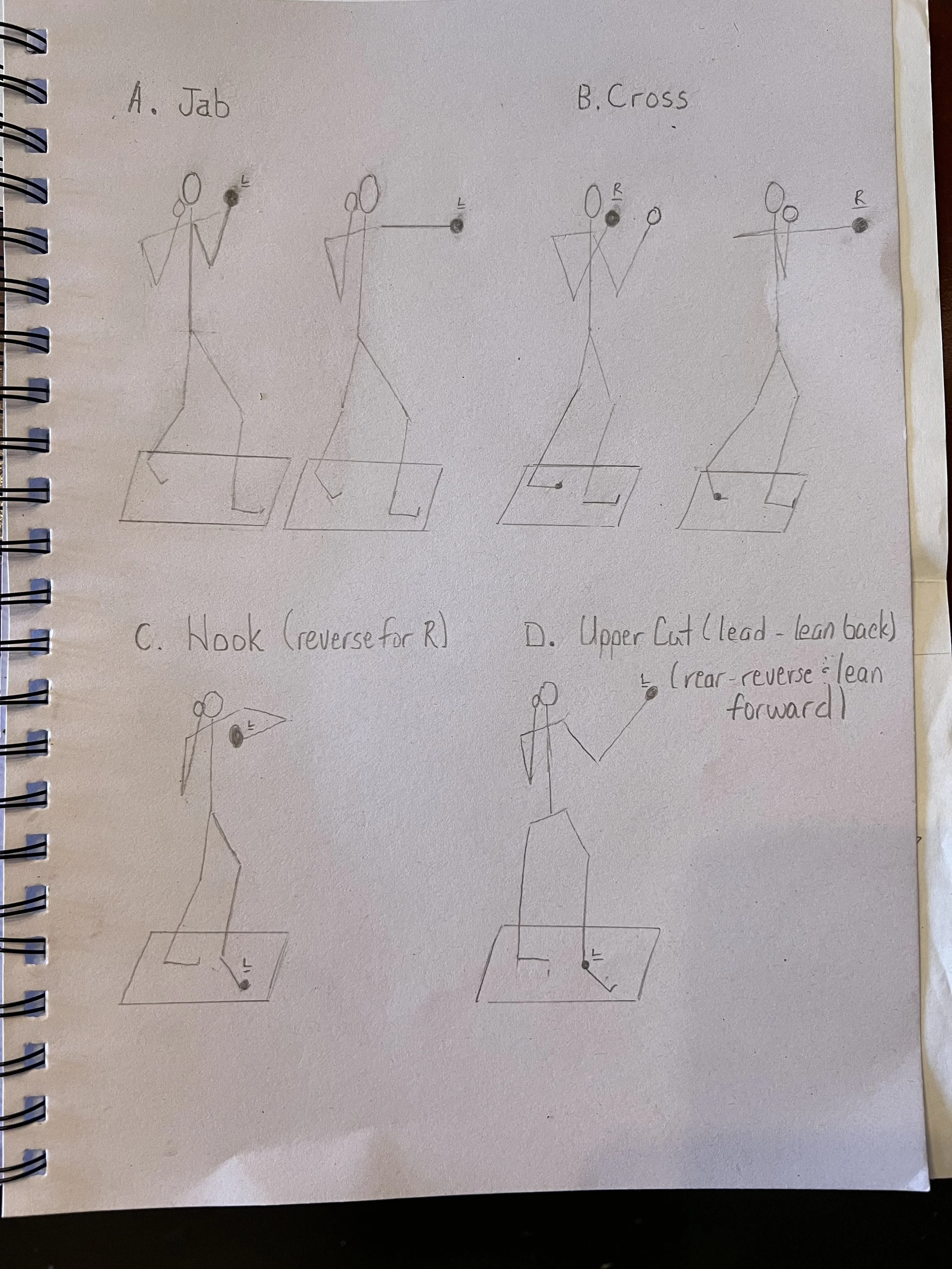Pugilism - Let’s Talk Boxing
*What can't be caught can't be hit.
UNFAMILIAR TERMINOLOGY CAN BE FOUND IN “Terminology and Definitions”
Invest your time in footwork. Without proper foot work, well, nothing else really matters. You have to be light on your feet, quick, have proper placement, pivot correctly, have a proper base, balance…and then some.
If we want to go right, we turn right, and to go left, we turn left. Forward and backward are the same.
Laterally we move left with our left foot and right with our right foot. We do this without thought. We do this all Naturally. Try it.
More on Fight or Flight:
We have an imaginary comfort bubble. For most it's about an arm’s length. Come within that space and our senses heighten. I call them "Spidey Senses". For some, our comfort bubble is larger. A leg is longer than an arm and therefore has further reach. A hand with a long weapon can even reach further.
In the animal kingdom a preys’ bubble may be even larger. Prey need to outrun or out maneuver predators. This dictates their bubble. Once a predator is inside this bubble, they are left with the option to run or fight. If you are participating in a sport like boxing, you understand that this imaginary safety bubble is where you must be to land a punch. Ironically its the same bubble where you will be on the receiving end of a strike. Triangle theory. This is presented later in this book.
*People DO NOT like to be touched and there is an exception. Movement towards someone is welcomed when its for purposes of nurturing, comforting, love, appreciation, or something intimate.
6 Punches:
In boxing, our hands are our tools for striking and defending. There are 6 punches.
1. Jab
2. Cross
3. Lead Hook
4. Rear Hook
5. Lead Uppercut
6. Rear Uppercut
When executing a punch, one foot remains planted or posted and the other moves or twists. Twist or pivot your right foot if you are throwing a punch with your right hand. IF you are throwing a punch with your left hand, pivot your left foot. All except the jab. The jab can be quick and snappy, driving or a pushing force. This punch can be thrown from a stationary position, moving forward, backward or while circling.
Working from the number 2 punch (right-handed).
2. The Cross - Left leg remains posted. Right foot, leg, hip, waist and right-hand move.
3. Left Hook - Right leg stays fixed or posted. Left foot, leg, hip, waist and left-hand move.
4. Right Hook - Left leg remains posted. Right foot, leg, hip, waist and right-hand move.
5. Left Uppercut - Right leg stays fixed or posted. Left foot, leg, hip, waist and left-hand move…rock back while executing.
6. Right Uppercut - Left leg remains posted. Right foot, leg, hip, waist and right-hand move. (rock forward).
Stance:
We stand slightly bladed, on an angle, with our feet a bit wider then our shoulders. Power is generated
from the ground up. This is a good punching stance. Keep the heels of your feet slightly off the ground/
stay on your toes. This is good for offensive maneuvers and also for evasion. Remain light on your feet.
Bend your knees a bit. Stand slightly crouched while keeping your abs, or core, tight. Chin
down and shoulders up. The knee position is good for movement, explosive bursts, absorbing blows, etc.
Keeping crouched makes for a smaller target. Our chin and shoulder position act as shields.
In time you will find your “home”. You will feel comfortable and balanced.
*Balance. If you don’t have balance, you have nothing.
Hands:
90 percent of people are right handed.
Your lead or left hand remains in front (this is your jab hand) Your elbow keeps your floating ribs safe and your hands should remain about chins height. Your right hand rests on your right cheek and your elbow rests against your right side, over your floating ribs for protection.
Only make a tight fist when striking/making impact. Your “hands” will move faster! Making a fist tightens your arm muscles. You will lose speed if you keep clinched fists. Keeping soft (unclenched) hands also allows for opening of the gloves for some
techniques.
Defenses:
(Touch and No Touch)
No touch, as I call them, are techniques like the double arm block, slipping, ducking, the half step, and feinting. They are as important as the rest.
NOTES:
Touch techniques like the parry, swim, etc. are great also for deception, creating openings, etc. Parrying can be in 4 directions and the swim either in or out are a part of the boxers’ arsenal too.
NOTES:
In time we combine all techniques. Combining Movement of Head, Feet and Hands in all directions with
varying rhythms. Each boxer finds their way and their way is theirs to own.
NOTES:
Head movement:. Keep your head moving with slips, drops, rotation and foot work.
Combination Punches:
Natural (side to side)
1,2
1,2,3
6,3,2
Trained (same side)
5,3
Hit and Move, Move and Hit
Perry, Gunt, Pass and Hit
Slapping
Slapping and returning
Hammering
Fingers (jabbing)
Fook, Jut, Pak, Bong, Lap
Limb Destrucon
“You are destroying a man’s spirit, not the man.”
Kicking
Knees
JKD Kicks - lead round, side kick, shovel kick, masse
Angles 12, 6, 13
Driving
Conclusive
Bringing or drawing towards you
Circle
Spiral
Not moving at all - (be limp...let someone move you)
Punches may be:
Driving
Conclusive
Circular
Spiral
Posting

